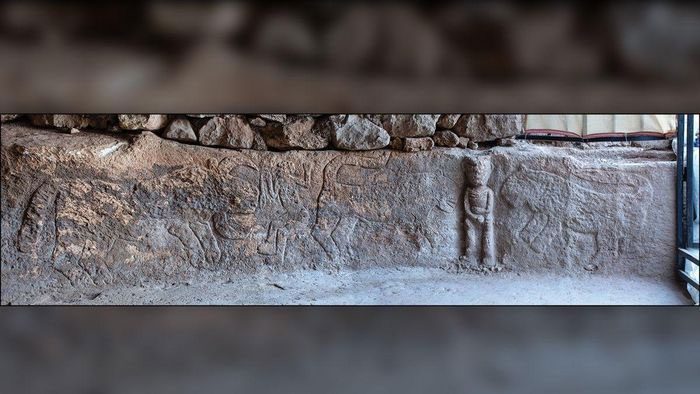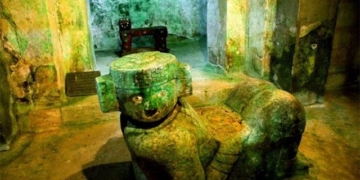An 11,000-year-old stone relief found in southeastern Turkey depicts leopards and two men, one of whom is holding his genitals, making it the oldest known relief to date, according to a new study.

The 11,000-year-old relief discovered in Turkey is the oldest known carving.
Archaeologists uncovered the intriguing carvings on integrated benches within a Neolithic building in the Urfa region.
Measuring approximately 0.7 to 0.9 meters in height and 3.7 meters in length, the newly discovered stone relief features two leopards, a bull, and two men—one holding his penis and the other holding a rattle or a snake.
Narrative Relief

Overview of the stone relief with the man holding his penis and another man facing the bull.
According to Özdoğan, an archaeologist at Istanbul University: “In terms of technique and craftsmanship, the flat reliefs can be compared to other Neolithic images in the area, but the Sayburç reliefs are unique because the figures form a narrative, suggesting related events or stories told, a kind of ‘reflection of collective memory that preserves the community’s values.’”
In an email, Özdoğan elaborated: “In places like Göbekli Tepe and Sayburç, there exists a masculine world and its reflections—male predatory animals, penises, and male representations. The difference in Sayburç is that they are depicted together to create a scene.”
Jens Notroff, a Neolithic archaeologist at the German Archaeological Institute, who was not involved in the study, agreed that the artwork aims to convey masculinity. He wrote: “The combination of expressing vitality and strength—the appearance of the penis—on one hand, and the life-threatening danger—predators baring their teeth—on the other, seems particularly noteworthy here.”
Notroff added that this discovery at Sayburç offers an intriguing new insight and he looks forward to seeing further results from ongoing studies and excavations at other Neolithic sites in the Urfa region and beyond.


















































